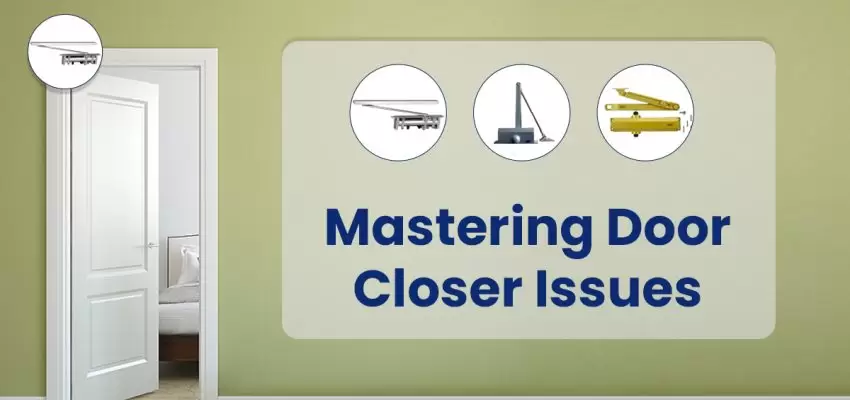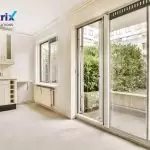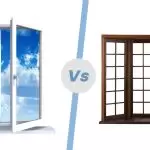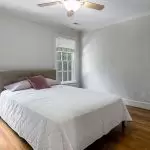A door closer is a mechanical device commonly found in homes and offices that helps regulate the opening and closing of doors. Its primary purpose is to prevent doors from slamming shut or closing on their own, especially in windy conditions or crowded spaces. In simple terms, the door closer automatically adjusts to ensure secure door closure. It can be applied to various door types, including front doors, folding doors, or sliding partition panels.
Post your Requirement
Comprising two main parts – a fixed component known as the firm and a movable part called the hanger – the door closer includes a latch positioned on the door’s top. This latch connects to a hook inserted into the door frame. Inside the latch, a spring enables the hook’s free movement, allowing for adjustable resistance to accommodate different door sizes within the premises.
Adjusting a door closer may seem simple, but it can be tricky without guidance. Follow this step-by-step guide, ensuring you have a screwdriver, work gloves, measuring tape, and a paper clip.
How a Door Closer Works?
A door closer operates on a simple mechanism. When you open the door, the internal spring of the device becomes tensioned. This tension in the spring is what facilitates the controlled closing of the door when you release it. The process ensures that the door closes smoothly and avoids slamming, contributing to both convenience and safety.
Types of Door Closers
Here we have mentioned the types of door closers:
-
Concealed Door Closer: Concealed closers, ideal for high-traffic areas, offer a clean finish, popular in office fronts. Suited for single or double-sided gates, providing a sleek appearance.
-
Surface-Mounted Door Closer: Common in industries, surface-mounted closers (slide-track arm, regular arm, parallel arm, top jamb) are easy to install and maintain without requiring special equipment.
-
Manual vs. Automatic Door Closer: Manual (spring, parallel arm, magnetic) closers use stored spring energy for closure, often employing hydraulic dampers for speed control. Automatic closers operate through controls like push buttons or motion detectors, enhancing safety and convenience.
Door Closer Replacement
Replacing a door closer might seem daunting, but it’s a manageable task. Begin by gathering the necessary tools, including a new closer, a screw removal tool, a screwdriver, and tape. Removing the old closer rod involves unscrewing it from the wall. Check the condition of the hole and use duct tape if needed for any repairs. Insert the new closer, ensuring it is level and secure, and tighten the screw to fix the upper part in place. Confirm proper functionality and alignment to complete the replacement process.
Top Brands Selling Door Closers
Select Door Closer from Top Brands to avoid recurrent door closer troubleshooting:
Types of Door Closer Problems you may Face
Door closer issues include uneven closing, speed problems, leakage, misalignment, and noise. Here in this section, we have discussed the door closer problems and their solution respectively:
The Door Closer is not Working
When your door closer is not working consider the following solutions:
-
Adjust the closing and latching speed valves with a screwdriver.
-
Verify correct installation and settings per the manufacturer’s instructions.
-
Ensure proper positioning and mounting height of the door closer.
-
Adjust the closing speed if the door closes too fast or too slow.
-
Lubricate as per manufacturer’s guidelines.
-
Inspect for physical damage and leaking hydraulic fluid.
-
Check for a broken or worn-out spring.
-
Ensure proper alignment and check for worn-out components.
Door Closer is not Closing all the way
In case your door closer is not closing all the way, consider the following solutions:
-
Ensure the door’s closer size matches the door’s weight.
-
Adjust main closing (sweep) and latch speed valves.
-
Address HVAC pressure or adjust settings.
-
Inspect and adjust door, frame, and hardware alignment.
-
Check and adjust spring tension.
-
Verify hydraulic fluid levels and arm connection.
-
Remove obstructions from the door’s path.
-
Investigate potential door or hinge issues.
The Door Closer is not Latching
When your door closer is not closing all the way, consider the following solutions:
-
Adjust latch speed to ensure proper closing force.
-
Confirm the correct installation of the door closer and its arm.
-
Check door alignment and make necessary adjustments.
-
Inspect the latch and strike plate for wear or damage.
-
Adjust the door closer power setting according to instructions.
-
Investigate door warping as a potential cause.
Door Closer Stuck Open
If your door closer is stuck open, consider the following remedies:
-
Ensure the door closer arm moves freely and is not obstructed.
-
Check the door spring for damage; replace if necessary.
-
Inspect the bottom of the door for obstacles.
-
Check for low hydraulic fluid or leaks.
-
Examine the arm spindle for breakage.
-
Verify door hinge tightness and condition.
-
Look for any obstructions preventing door closure.
Door Closer Making Noise
In case your door closer is making noise consider the following solutions:
-
Clicking: Tighten loose arm and mounting screws.
-
Hissing: Adjust spring tension or sweep speed.
-
Moaning: Adjust spring tension; consider replacement.
-
Creaky Noises: Replace dried O-ring seal or bearings.
-
Popping/Knocking: Tighten or replace worn arm screws.
-
Squeaking: Lubricate closer arm joints with spray lubricant.
-
Farting/Gurgling: Consult a professional for air bubbles or leaks.
Despite its apparent simplicity, a door closer is intricate to handle. Incorrectly chosen, it can lead to issues – too powerful, it slams doors; too weak, it affects closure. Consider sizing, mounting, application, and appearance for the right fit.
FAQs
Q-1. What is the working principle of a door closer?
A-1. A door closer’s working principle involves a spring mechanism. When the door is opened, the spring is tensioned, storing energy. Upon release, the spring releases this energy, gently closing the door.
Q-2. What is the most common type of door closer?
A-2. The most common type is the hydraulic door closer. It regulates door closing speed using hydraulic fluid, providing controlled and smooth closure in various applications.
Q-3. What are the requirements for a door closer?
A.3. Door closers need to meet size, weight, and application requirements. Correct sizing, appropriate mounting, and consideration of factors like door type and appearance ensure effective and efficient functionality.
Q-4. What three adjustments are typically on a door closer?
A-4. Door closers typically have three adjustments: closing speed, latch speed, and backcheck. Closing speed controls general door closing, latch speed manages the final closing inches, and backcheck regulates resistance against forceful opening.























Post A Comment